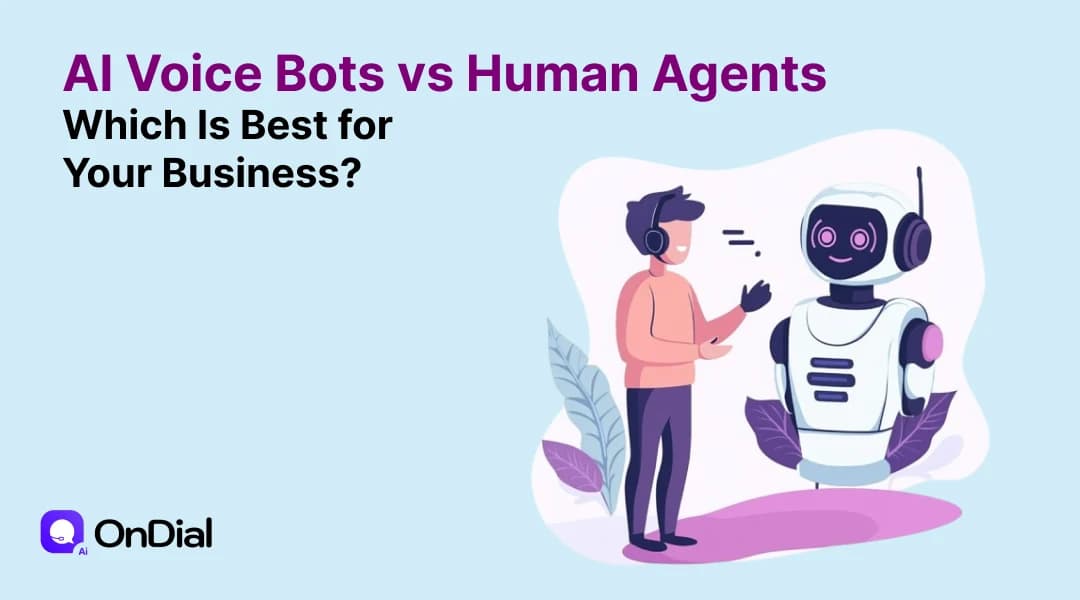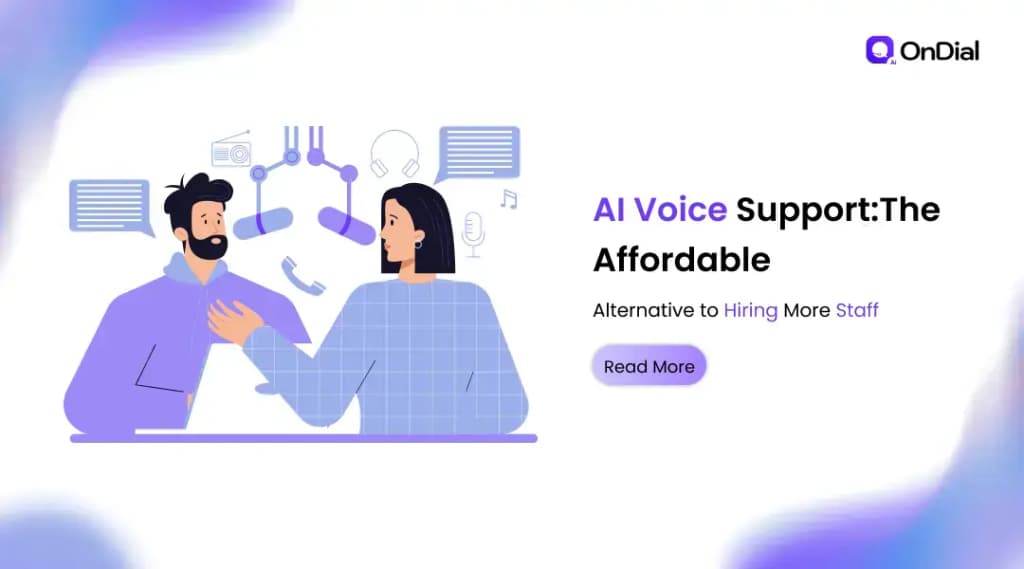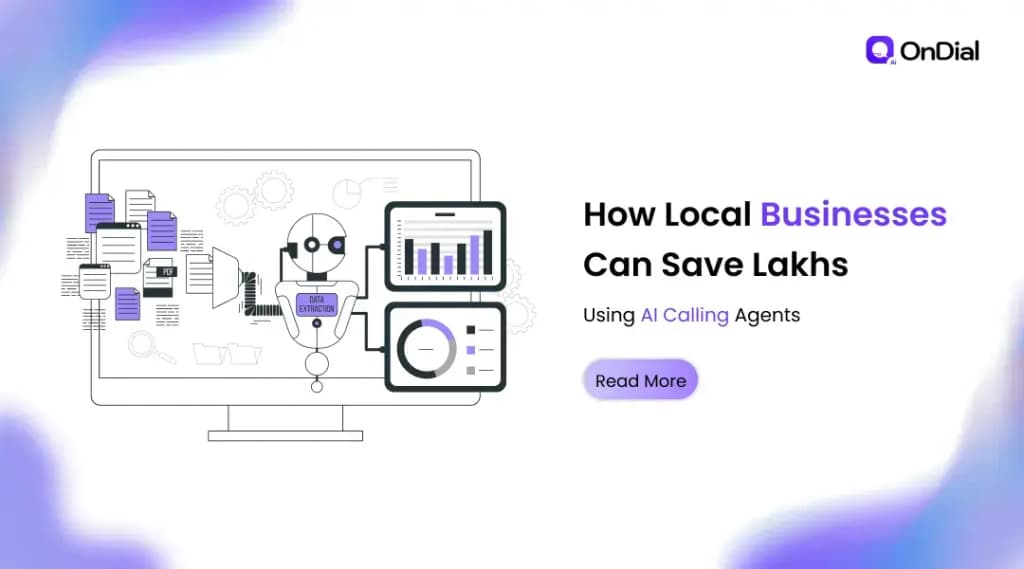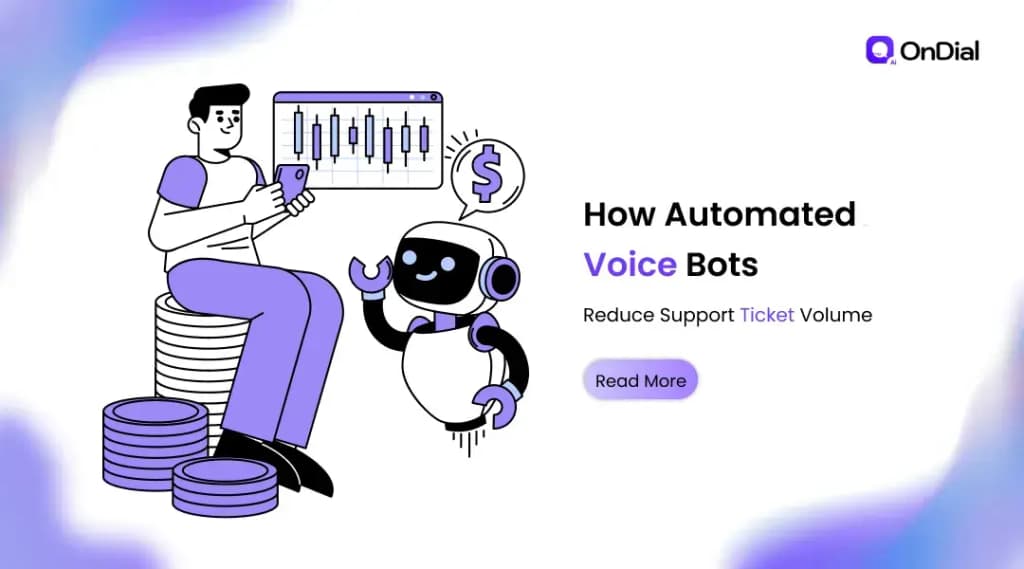Let me ask you something, have you ever called a company, only to be greeted by endless hold music and robotic menus, and hung up frustrated? Yeah, me too.
Now, imagine a world where a virtual voice assistant picks up immediately, understands your problem, and even remembers your previous interactions. Magic? Not quite. This is the promise of AI voice bots. But here’s the kicker: humans still bring something no bot can replicate.
I’ve spent over a decade working with businesses trying to balance efficiency with empathy. I’ve seen startups bet everything on AI, only to lose customers. And I’ve seen human teams struggle under repetitive calls that could have been automated. Today, I’m going to break it down for you—plainly, honestly, and without fluff—so you can decide whether AI, humans, or a mix is right for your business.
What Are AI Voice Bots?
Definition and functionality
AI voice bots are software-driven agents that can conduct conversations over the phone. Unlike simple IVR systems, these bots understand natural language, process intent, and respond dynamically. They can schedule appointments, answer FAQs, escalate calls, and more.
How AI call agents work
At the core, AI call agents combine speech recognition, natural language processing, and machine learning. They “listen,” interpret what the caller wants, and provide accurate responses. Over time, they learn from interactions, improving accuracy.
Examples in real businesses
- E-commerce platforms use AI bots for order status and returns.
- Banks deploy for balance inquiries and fraud alerts.
- Healthcare providers schedule appointments and answer insurance queries.
These bots don’t just answer calls—they can reduce wait times, cut errors, and handle thousands of interactions simultaneously.
The Role of Human Agents in Customer Service
Key responsibilities and strengths
Human agents aren’t going anywhere. They handle tasks AI cannot: interpreting nuanced complaints, navigating unusual requests, and providing reassurance when things go wrong.
Emotional intelligence and problem-solving
Humans excel at empathy. A caller frustrated by a billing error doesn’t just want a solution—they want to feel heard. This emotional intelligence is critical for high-value interactions and complex problem-solving.
AI Voice Bots vs Human Agents: Key Differences
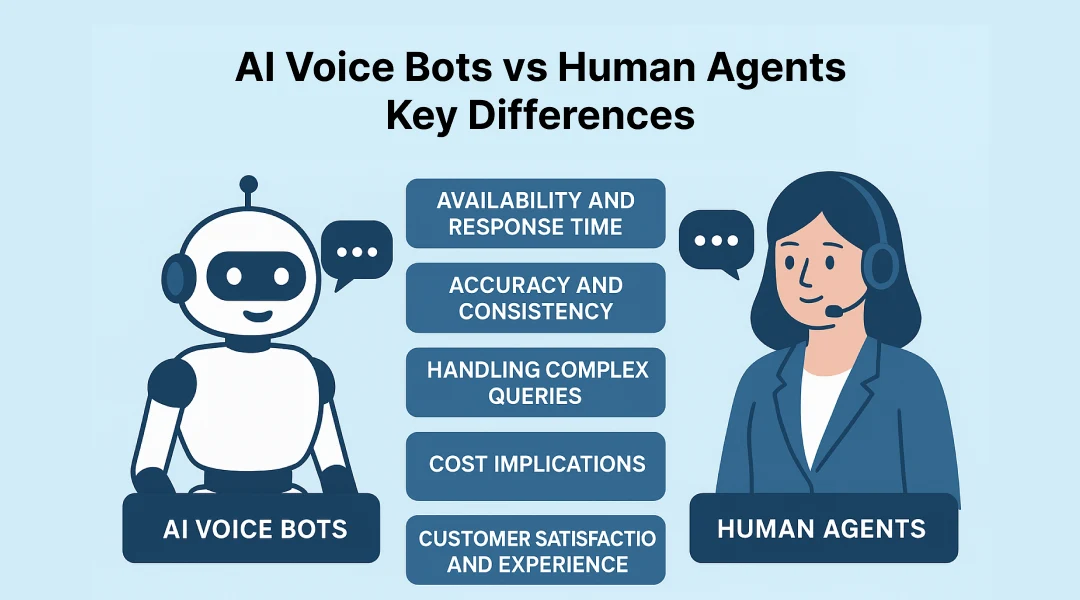
Availability and response time
AI bots: 24/7, instant responses. Humans: Limited hours, potential for delays.
Accuracy and consistency
Bots follow rules perfectly, every time. Humans, well… mistakes happen, fatigue sets in.
Handling complex queries
Bots struggle with ambiguous issues. Humans can read tone, sense frustration, and think creatively.
Cost implications
Bots: High upfront cost, low incremental cost per call. Humans: Ongoing salaries, training, and attrition costs.
Customer satisfaction and experience
Bots excel for routine queries. Humans excel for high-stakes, sensitive interactions.
Advantages of AI Voice Bots
- 24/7 availability: No breaks, no holidays, no waiting.
- Scalability: Handle spikes in calls without hiring.
- Cost savings: Reduce reliance on large call centers.
- Quick handling of repetitive tasks: FAQs, status updates, confirmations.
Advantages of Human Agents
- Emotional connection: Humans empathize, calm, and reassure.
- Handling complex and sensitive issues: Escalations, complaints, or unusual scenarios.
- Personalization: Adjust tone, language, and approach to the caller.
When to Choose AI, Humans, or a Hybrid Model
Factors to consider
- Business size: Small businesses may prioritize human touch; large enterprises benefit from automation.
- Query complexity: Repetitive queries = AI; nuanced issues = humans.
- Cost constraints: Hybrid models often balance efficiency and empathy.
Examples of hybrid models working effectively
- AI bot handles initial triage and routing, humans resolve escalated issues.
- AI collects preliminary info, human agents finalize complex resolutions.
Implementation Tips for Businesses
Choosing the right AI voice bot software
Look for:
- Natural language understanding
- CRM integration
- Customizability
- Reporting and analytics
Training human agents for hybrid setups
- Use AI insights to pre-brief agents
- Teach humans to handle escalations efficiently
- Encourage collaboration between bot and human teams
Measuring success and KPIs
- Customer satisfaction (CSAT)
- First-call resolution
- Average handling time
- Cost per interaction
- Adoption rate of AI Phone Calls and AI Voice Assistants
Conclusion
Here’s the truth: neither AI voice bots nor human agents are universally superior. They’re tools. The winning strategy? A hybrid approach. Use AI for efficiency and humans for empathy. When orchestrated well, your business can scale smarter, reduce support costs, and keep customers genuinely satisfied.
Your customers won’t care about technology. They’ll care about you solving their problem—fast, efficiently, and with a human touch when it matters.
